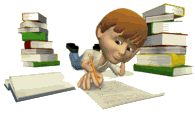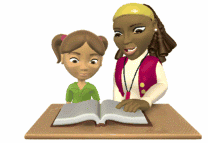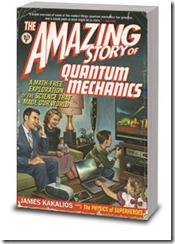 As a high school physics teacher, I teach to a clientele that is, in the majority, college bound. Very few actually plan on majoring in physics, and many will never need physics in their future careers. So what can I offer these students, besides the obvious overview of physics and a slightly better understanding of the world they live in?
As a high school physics teacher, I teach to a clientele that is, in the majority, college bound. Very few actually plan on majoring in physics, and many will never need physics in their future careers. So what can I offer these students, besides the obvious overview of physics and a slightly better understanding of the world they live in?
From my perspective, the most valuable asset I can give my kids is helping them learn to teach themselves. In today’s society, success in any career requires the willingness and ability to become a lifelong learner, adapting to the changing scenery of today’s job market. Due to the proliferation of the Internet, the information needed is readily available, though many times students are inexperienced in how to digest it. My task, then, besides teaching physics, is teaching students how to teach themselves.
This is a huge asset in college courses, and even more important in real-world situations. For example, I will never forget my freshman Chemistry II course. Our instructor was hilarious, he would lecture to a hundred students for an hour three times a week on a wide variety of topics, none of which were even remotely related to our chemistry curriculum. It was entertaining, but uninformative. Nevertheless, our course exams still covered the standard curriculum. If you wanted to survive, you had to read the book and figure it out yourself, a great learning experience early in my college career, even if not by the college’s design.
Physics is a terrific course for allowing students to learn to build their own understanding.
I don’t teach students physics directly. At least, I avoid it as much as possible. Instead, I set up learning experiences, resources, lab activities, and discussions that allow them to develop their own understandings. Of course, we come back together to combine what we’ve learned in our classroom community, but students are expected to answer their own questions, with leading questions and directions from the instructor where necessary.
 At the beginning of the year, this is very uncomfortable for many students, but as the course progresses, they build more and more confidence in their skills as I remove more and more of their "scaffolds" and assistance. By early spring, students are ready for their first independent learning unit, in which I give them a set of pages to read in several books, point them at a web page or two from my APlusPhysics site, reference a couple of online video primers on Youtube or APlusPhysics, and provide them a couple problem sets and lab activities. Then, they’re on their own for the week, coming to me only for additional resources or clarification.
At the beginning of the year, this is very uncomfortable for many students, but as the course progresses, they build more and more confidence in their skills as I remove more and more of their "scaffolds" and assistance. By early spring, students are ready for their first independent learning unit, in which I give them a set of pages to read in several books, point them at a web page or two from my APlusPhysics site, reference a couple of online video primers on Youtube or APlusPhysics, and provide them a couple problem sets and lab activities. Then, they’re on their own for the week, coming to me only for additional resources or clarification.
It’s a scary proposition, but the students stretch to meet the increased expectations, oftentimes reporting not only a successful independent learning experience (verified by and-of-unit exam scores as well as analysis of lab reports), but a desire to engage in more of these activities in the last few months of the school year. A success not only for physics content, but even more, a success for life skills that will allow them to exceed the reach of their teachers as they grow and develop.
 A good teacher doesn’t answer students’ questions, a good teacher asks probing and leading questions that guide students to answer their own questions. A good teacher doesn’t lecture hour after hour, a good teacher allows students to explore, develop, err, and reflect. And most importantly, a great teacher doesn’t talk and talk and talk, but instead engages in conversations with students, listening, reflecting, and adapting instruction to the needs of the individual.
A good teacher doesn’t answer students’ questions, a good teacher asks probing and leading questions that guide students to answer their own questions. A good teacher doesn’t lecture hour after hour, a good teacher allows students to explore, develop, err, and reflect. And most importantly, a great teacher doesn’t talk and talk and talk, but instead engages in conversations with students, listening, reflecting, and adapting instruction to the needs of the individual.
Keep these things in mind when searching for a tutor, regardless of subject. If the tutor appears to be working harder than the student, something’s wrong. The tutor should be asking the questions, allowing the student to struggle, make mistakes, and learn to recover. Look for resources the student can use to answer their own questions, and make sure the student starts there. The teacher should never be a student’s primary resource for knowledge. Our job as educators is to create learning experience for students to engage in, not to spoon feed knowledge which will soon be forgotten.

